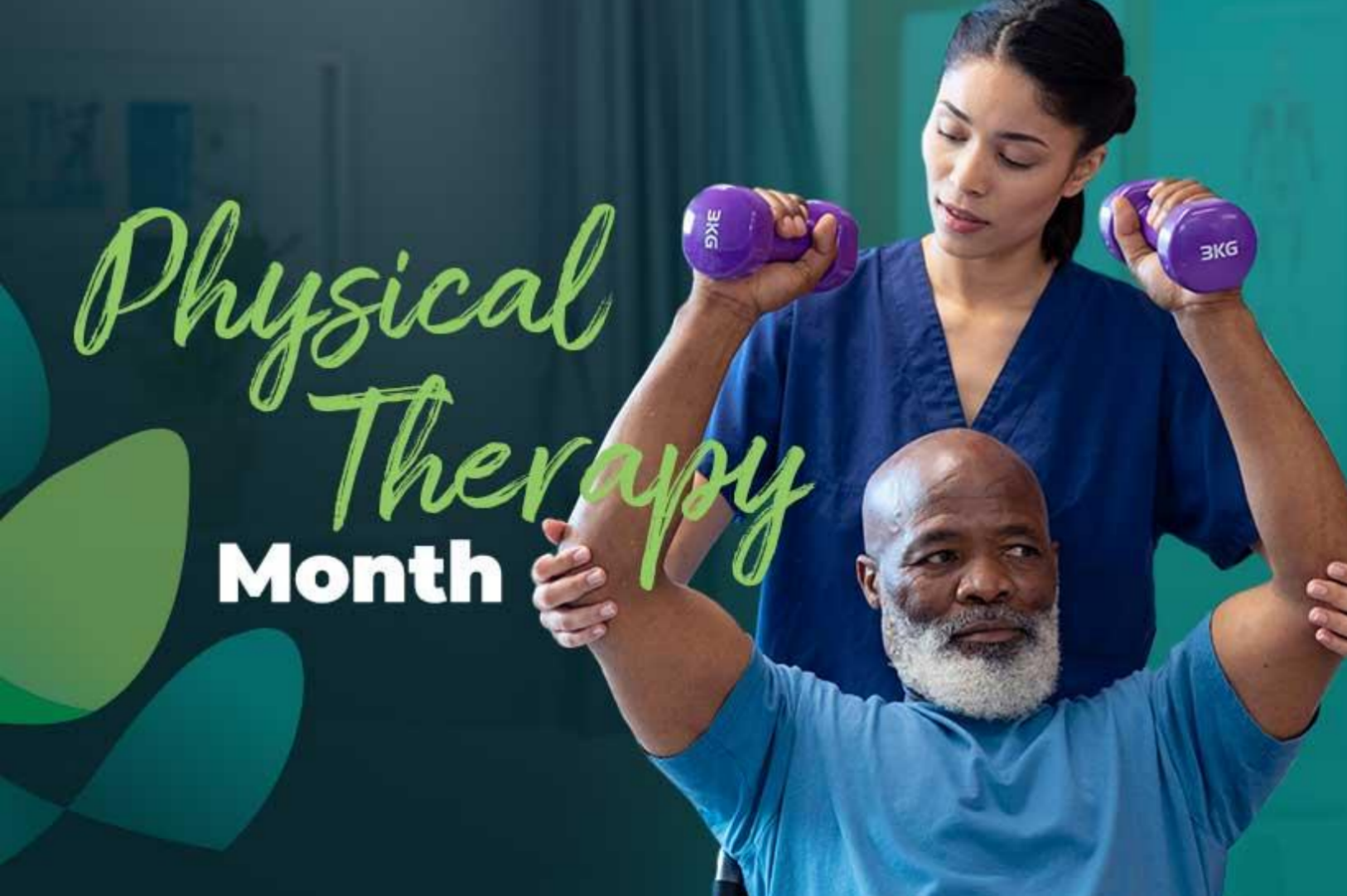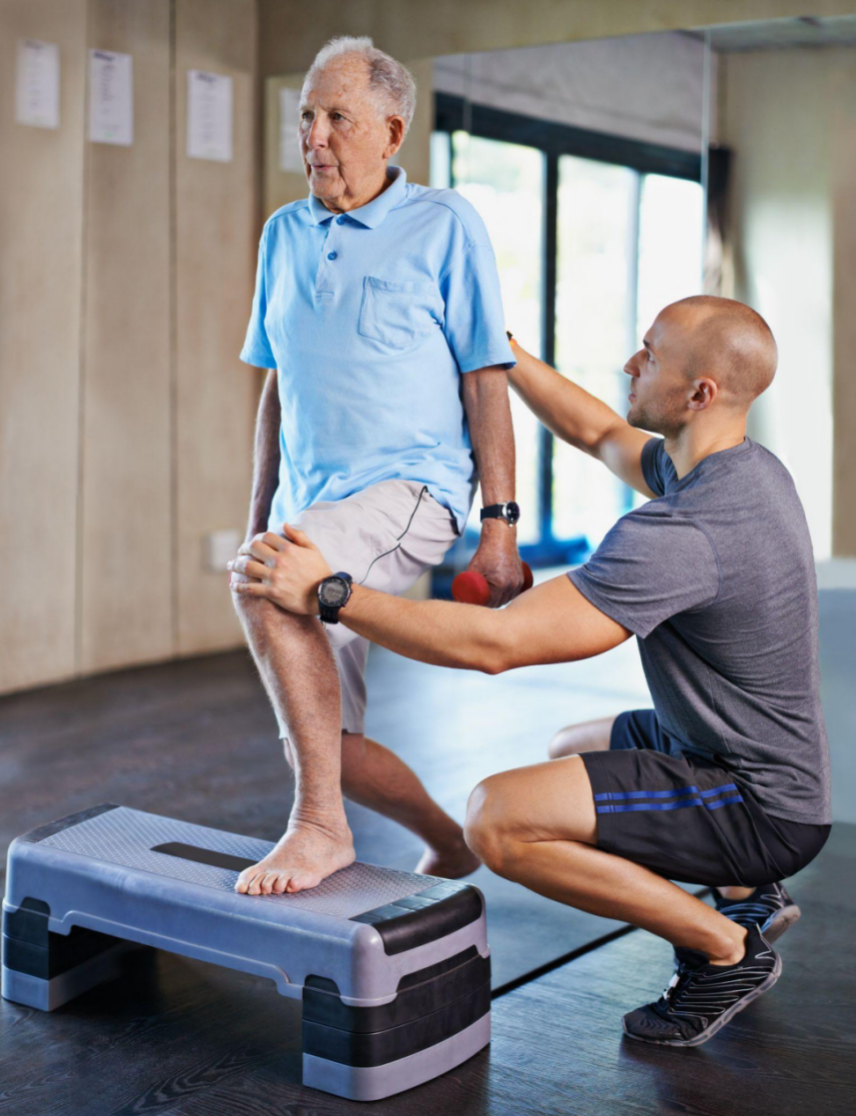Let’s Get Physical: October Is Physical Therapy Month

Break out the sweatbands and stirrup pants; it’s time to get physical! October is Physical Therapy Awareness Month, and we’re excited to highlight this important yet sometimes overlooked aspect of healthcare. While we don’t perform physical therapy at our center, we partner with incredible physical therapists who help our patients on their road to recovery every single day.
We found that nearly all surgeons agree on two key points:
- Even at a surgery center, medical intervention is not always the first option—it’s only necessary when other modalities have been ineffective. Sometimes, a little PT is all you need to get back in the game.
- If surgery is required, it’s crucial for patients to participate in physical therapy as recommended by their surgeon to ensure the best possible outcome.
In this edition of the SCSC Blog, we’re spotlighting physical therapy—its long history as a medical modality and its vital role before and after joint replacement surgery. PT is essential to improving outcomes and speeding up recovery for patients undergoing surgery at an ambulatory surgery center like St. Cloud Surgical Center.
Let’s dive in!
First things first, what does a Physical Therapist do?
By definition, a physical therapist is a health professional whose educational pursuits have made them experts in human movement and the musculoskeletal system. They work with patients who have injuries, disabilities, or other health conditions that limit their bodies’ ability to move or function in a specific way. Their goal is to improve the quality of life through hands-on care, patient education, and prescribed exercise.
Physical therapists can help patients:
- Maximize mobility
- Prevent future problems
- Improve physical function and fitness
- Regain or maintain their independence
- Lead active lives
PT can be a great recovery tool, but many of our patients have found success in using PT beyond the recovery process, especially as they age. Consistently, physical therapy can enhance strength, flexibility, and balance—all essential components for longevity and independent living as you age.

A Brief History of Physical Therapy in America
Physical therapy has roots dating all the way back to 435 BC, when Hippocrates were believed to have first used massage, hydrotherapy, and manual therapy to treat patients with chronic pain. However, it wasn’t until the early 1900s, following World War I, that physical therapy was considered a valid profession. As soldiers returned from war needing rehabilitation, physical therapists, or “reconstruction aides,” who were trained to help them recover.
In those early days, a two-year education program was all that was required to become a PT specialist. Today, the educational standards have evolved, with most physical therapists earning a master’s degree or clinical doctorate. And that’s a good thing! Most education means improved outcomes for both patients and professionals and ensures a higher standard of care across the board.
With physical therapy recognized as a valid and very needed profession, their role in our healthcare system has expanded. Over the past two decades alone, their scope of practice has broadened, allowing PTs to specialize in a variety of areas, including:
- Orthopedics
- Neurology
- Pediatrics
- Geriatrics
- Sports
- Acute Care
- Pelvic Health
- Oncology
- Chronic Pain
This variety enables physical therapists to treat a wide range of patients, from those recovering from joint replacements and sports injuries to those managing chronic pain.
Physical Therapy and Your Upcoming Surgery
Not every patient who comes to St. Cloud Surgical Center will need physical therapy. In fact, with the wide range of specialties we offer, most patients won’t be required to complete PT once they leave our doors. When we talk about the role PT plays in recovery, we’re typically referring to our joint replacement patients.
Our expert orthopedic surgeons perform hundreds of joint replacements each year. Some of the most common surgeries include total knee replacement, partial knee replacement, total hip replacement, and, more recently, shoulder surgeries. All of these procedures require intensive physical therapy post-op to ensure your body regains full mobility. Certain hand and wrist procedures—such as carpal tunnel release, trigger finger surgery, and nerve repairs—may also require PT, though these can often be done at home.
Prior to your procedure, you will meet with your surgeon and care team to discuss several important topics, including your post-op physical therapy requirements. If you’ve never had a major surgery before that involved PT, this might seem like a very overwhelming conversation. To help ease your mind, we’ve prepared a list of questions you should ask your physician:
- Is there anything I can do before surgery (prehab) to improve my recovery? If so, what specific exercise should I be doing?
- Are there any specific movements or activities I should avoid before surgery to prevent further damage to my joint?
- How soon after surgery will I start physical therapy, and what should I expect in those early sessions?
- What are the key goals of physical therapy after surgery, and how long will I need to participate in PT to regain full mobility?
- How will my progress be monitored during physical therapy, and how do we determine when I’ve achieved my recovery goals?
The Path to Full Recovery
If you’ve made it this far, chances are you’re feeling a little intimidated—but don’t be! At St. Cloud Surgical Center, we partner with the best physical therapists in the area and trust they’ll use their wealth of knowledge to guide you through the ups and downs of your post-surgery recovery.
Physical therapy is often an essential part of surgery as it helps patients regain mobility, reduce pain, and prevent complications like stiffness or scar tissue formation.
- Pain Management: PT techniques like gentle stretching, movement exercises, and modalities like ice or heat therapy can help control pain without relying solely on medication.
- Restoring Function: Through guided exercises, PT helps patients restore strength and function in the operated joint. This can be crucial in regaining independence with everyday activities like walking, climbing stairs, and returning to work.
- Preventing Complications: Regular movement is key to preventing complications like blood clots or joint stiffness. PT encourages early, safe movement post-surgery.
- Personalized Care: Each patient’s rehabilitation program is tailored to their specific needs, helping them progress at the right pace.
Let’s take a look at some common PT exercises for two of our most frequent procedures: knee replacement and total hip replacement. Keep in mind, these are general guidelines, and each patient’s needs may vary.
Knee Replacement
For partial and total knee replacements, your orthopedic surgeon and physical therapist may recommend different levels of activity.
The following exercises may be used to help increase circulation and mobility:
- Quadriceps Sets
- Straight Leg Raises
- Ankle Pumps
- Knee Straightening Exercises
- Bed-Supported Knee Bends
- Sitting Supported Knee Bends
- Sitting Unsupported Knee Bends

Total Hip Replacement
The PT process for a total hip replacement is very similar to that of the knee replacement. You’ll focus on building up the strength and flexibility of your hip and can expect to participate in varying levels of activity.
The following exercises may be used to help increase circulation and mobility:
- Standing Iliotibial Band Stretch
- Seated Rotation Stretch
- Knee to Chest
- Supine Hamstring Stretch
- Hip Abduction
- Internal/External Hip Rotation
One of the best exercises during early recovery, for both knee and hip replacements is simply to walk! Post surgery, you will start with short distances and work your way up to longer distances and time frames. At first, you can expect to walk with the assistance of a walker or other mobility device, but with time, you will regain your independence.
The biggest concern with early walking is your fall risk. While walking is important, it’s equally important you listen to your care team and avoid pushing your limits. Eventually, you’ll be able to increase your walking distance, the weight you put on your knee/hip, and the resistance you use for your daily exercises.

If you find yourself feeling discouraged, remember, physical therapy is a long game, but crucial to your final outcome.
Ambulatory surgery centers like the St. Cloud Surgical Center are designed for same-day surgery, allowing patients to return home after their procedure. Within this model, physical therapy becomes especially important, as it ensures patients receive the education and exercises they need to succeed at home. A structured PT plan can make all the difference in a patient’s recovery and is vital to ensuring optimal outcomes. During Physical Therapy Month, let’s all celebrate the dedicated professionals who help patients take those critical steps toward better health.
If you have questions about an upcoming surgery and the physical therapy requirements you may have, please feel free to contact us or connect with your care team directly. Your health is our number one priority!
Sources:
https://orthoinfo.aaos.org/en/recovery/total-knee-replacement-exercise-guide/
https://orthoinfo.aaos.org/en/recovery/hip-conditioning-program/hip-pdf/